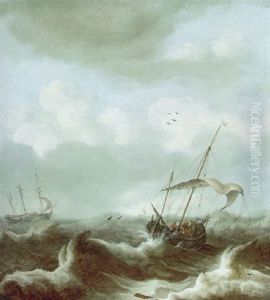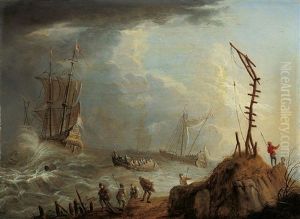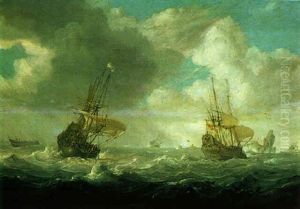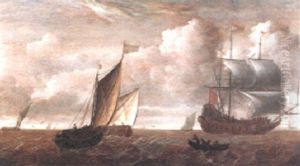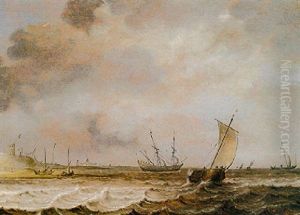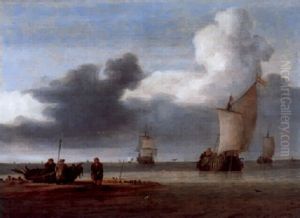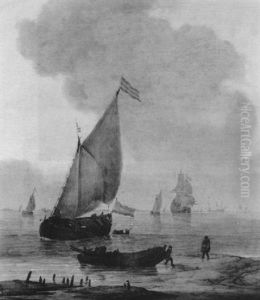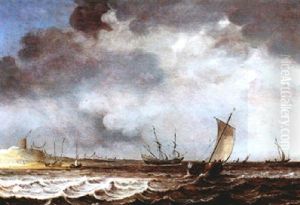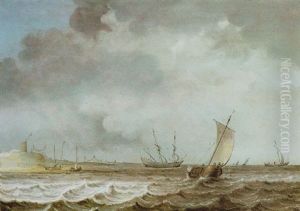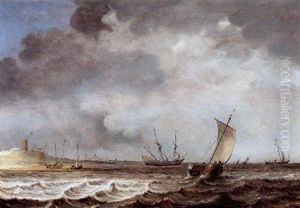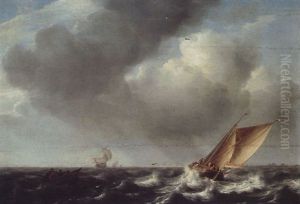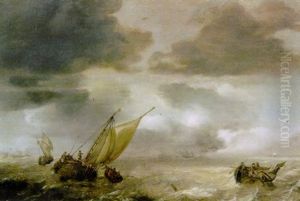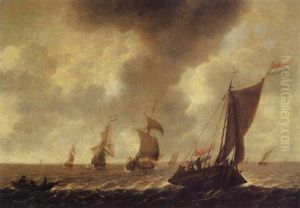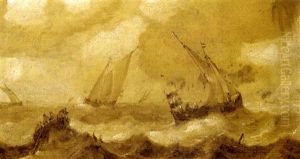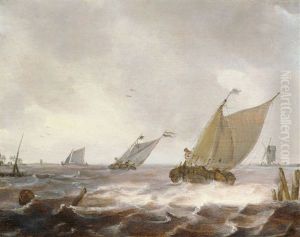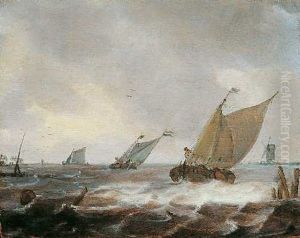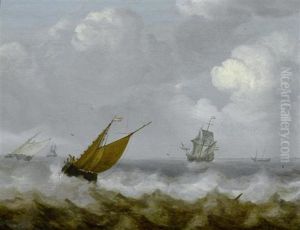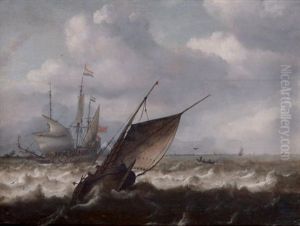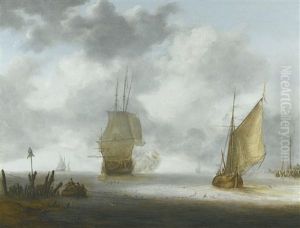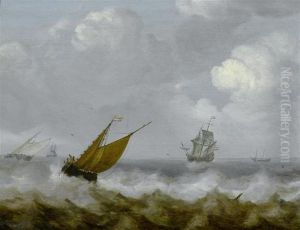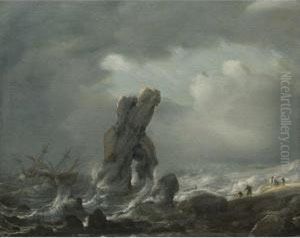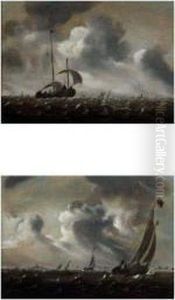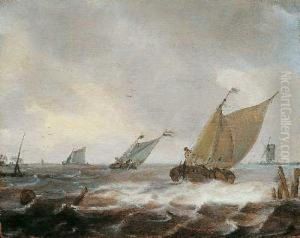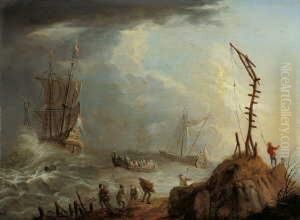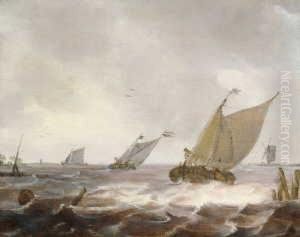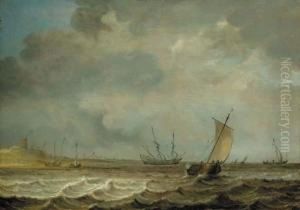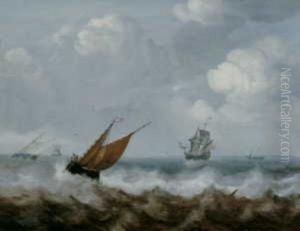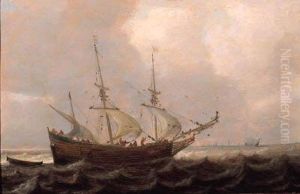Julius Porcellis Paintings
Julius Porcellis was a Dutch Golden Age painter, known primarily for his marine paintings, following in the footsteps of his father, Jan Porcellis, who was also a notable marine painter. Julius was baptised on 8 February 1610 in Rotterdam, Netherlands. His father, Jan, was a pioneer in the transformation of marine painting from its previous somewhat rigid form to a more naturalistic and atmospheric style. Julius continued this stylistic evolution, contributing to the genre with his own perspective and technique.
Not much is known about Julius Porcellis's training, but it is likely that he learned painting from his father. His works often depicted ships and the sea, demonstrating a mastery of maritime subjects. He managed to capture the vastness of the sea and the intricacies of ship construction with a keen eye for detail and a delicate handling of light and atmosphere.
Julius's paintings are characterized by their lively representation of the sea, often portraying rough waters and the busy life of seamen. This focus reflects a broader fascination with the sea during a time when the Dutch were leaders in naval exploration and trade. The ships in his paintings are typically set against expansive horizons, and his skies suggest the changing weather patterns, imbuing his scenes with a sense of movement and drama.
Porcellis's career was relatively short, as he died in 1645. Despite his early death, his contributions to Dutch marine painting were significant, and his works are considered part of the important body of Dutch maritime art that has been studied and celebrated for centuries. His artworks can be found in various collections and museums, and they continue to be appreciated for their historical value and artistic merit.
